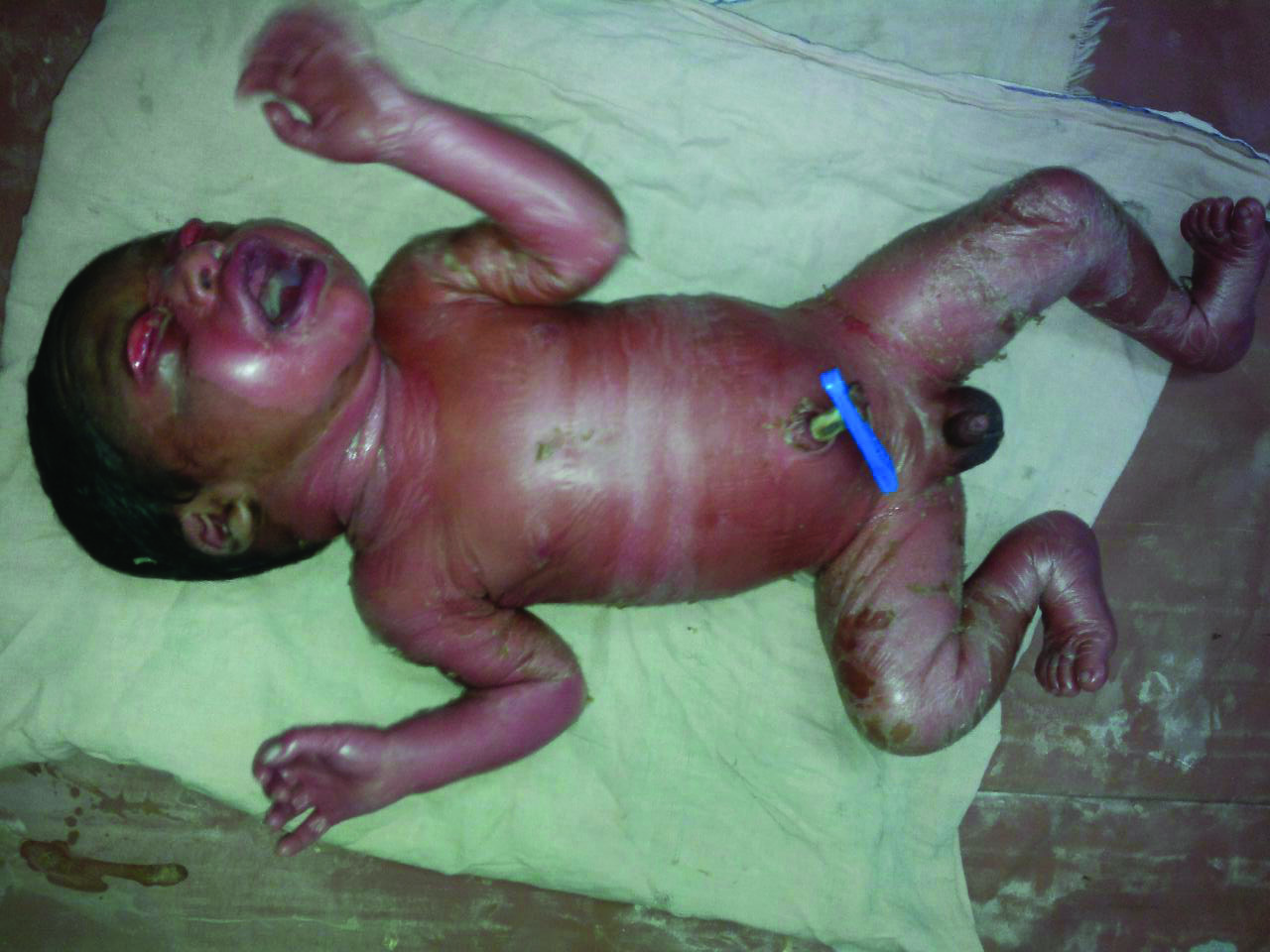Collodion Baby: A Rare Clinical Entity
Bikash Chandra Satapathy1, Diptirekha Satapathy2
1 Senior Resident, Department of Anatomy, All India Institute of Medical Sciences, Raipur, Chhattisgarh, India.
2 Senior Resident, Department of Paediatrics, All India Institute of Medical Sciences, Raipur, Chattisgarh, India.
NAME, ADDRESS, E-MAIL ID OF THE CORRESPONDING AUTHOR: Dr. Bikash Chandra Satapathy, Senior Resident, Department of Anatomy, All India Institute of Medical Sciences, Raipur-492099, Chhattisgarh, India.
E-mail: bikash.satapathy@gmail.com
Dear Editor,
We read the article Collodion Baby: A Rare Clinical Entity [1] with interest. Collodion babies either spontaneously heal or develop some form of ichthyosis. Harlequin Ichthyois (HI) is a severe and mostly fatal form of ichthyosis, which should not be confused with collodion baby. The baby described by the authors has been correctly diagnosed by the dermatologists as HI, but the title described the case as if it was a collodion baby. Collodion baby and HI are presentations of neonatal ichthyoses alongside X-linked ichthyosis, epidermolytic ichthyosis and netherton syndrome [2].
Rathore S et al., described a case of HI with second degree consanguineous marriage in India [3]. Harlequin ichthyosis babies are common in consanguineous marriages and they are known to recur [4]. In this article whether the pregnancy was from a consanguineous marriage or not, was not described. A family history complete with consanguinity of the parents and other affected family members are required for making the aetiological diagnosis.
The HI baby survived five days before being lost to follow up. This is an important event and we congratulate the caregivers as generally the survivability is poor, only 14 children and young adults are surviving of HI in Great Britain [4]. In fact survivability is so poor that earlier the term was harlequin foetus as almost always it was a still birth or resulted in early neonatal death.
We present a previously not published case of collodion baby [Table/Fig-1]. There was a shiny transparent membrane stretched over the baby. The baby had bilateral ectropion with eclabion. The photograph was taken on second day of admission in newborn ward and ichthyosis was visible in the lower limbs. This male baby was born at 36 weeks, by vaginal delivery, from a non-consanguineous marriage. The patient was managed in the newborn ward with oro-gastric feed, followed by katori spoon feed and prophylactic antibiotics and was discharged after seven days. He was followed up after one and half months, when he was admitted with pneumonia. At that time the baby had developed lamellar ichthyosis. Unfortunately no photographic record was kept. The baby was discharged after seven days.
Shows collodion membrane stretched over the whole body and it is torn at openings like eyes, nostrils and mouth. There is ectropion. In the thigh and leg the membranes have cracked and have started to become scales leading to ichthyosis.

[1]. Kumar R, Nadri G, Wadhwa V, Mundhra R, Colloidion baby: A rare clinical entity J Clin Diagn Res 2016 10(7):SJ01-02. [Google Scholar]
[2]. Craiglow BG, Ichthyosis in the newborn Semin Perinatol. NIH Public Access 2013 37(1):26-31. [Google Scholar]
[3]. Rathore S, David LS, Beck MM, Bindra MS, Arunachal G, Harlequin ichthyosis: Prenatal diagnosis of a rare yet severe genetic dermatosis J Clin Diagn Res 2015 9(11):QD04-6. [Google Scholar]
[4]. O’Toole EA, Kelsell DP, Harlequin Ichthyosis. In: Irvine AD, Hoeger PH, Yan AC, editors Harper’s Textbook of Pediatric Dermatology 2011 3rd edWiley-Blackwell:13.5 [Google Scholar]